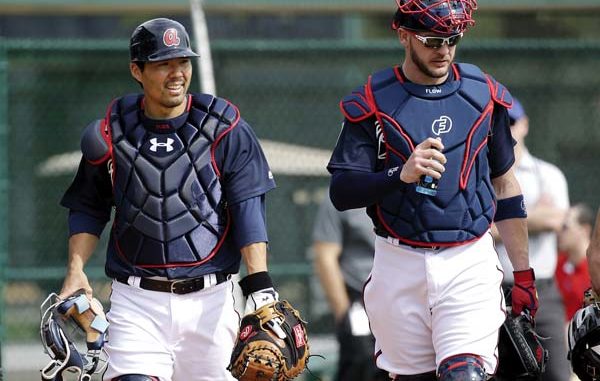
According to Fangraphs, no team in the major leagues last season extracted more value from the catching position than the Atlanta Braves. The Flozuki tandem was so successful, the Braves moved quickly to keep the two around for another year. Down on the farm though, the Braves are growing an intriguing crop of potential big league backstops… so many in fact that it’s very difficult to project where they are all going to land, or even if they’ll remain at catcher.
Note: While it’s rare for the Atlanta Braves to carry more than two catchers, most of the minor league teams do so, usually a starter, a main back-up, and a third player who catches but also backs up other positions, usually first base.
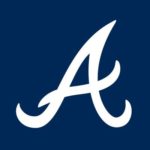 ATLANTA BRAVES
ATLANTA BRAVES
STARTER: Tyler Flowers
Flowers has been the best free agent signing of the rebuild era, and quite frankly it’s not even been close. Flowers has provided solid defensive catching as expected, but also this two best offensive seasons of his career. The Braves picked up his $4 million option for 2018, and it was pretty much the biggest no-brainer of the offseason. Flowers is a terrific option to lead a young pitching staff, both from a soft skills standpoint and also in catching technique, including pitch framing.
The question now is what to expect from Flowers going into his age 32 season. Statistical probability would probably tell us to expect an offensive decline. I however have seen no evidence that we should expect a significant decline, and unless yet another errant fastball finds his left wrist and causes him to miss time (as has happened two years in a row), I fully expect Flowers to once again be among the league leaders in catcher value.
BACK-UP: Kurt Suzuki
Suzuki signed late last offseason for a modest $1.5 million, one-year deal. To put it mildly, the Braves got way more than they likely anticipated, as Suzuki post career-highs in most offensive categories in his age-33 season (collegue Brent Blackwell wrote about Suzuki’s historical season shortly before the 2017 season ended).
As with Flowers, the question is how much of the 2017 Suzuki will hang around for 2018. Again, statistical probability tells us to expect a fall-off, but there was a notable difference in his batting profile in 2017 that resulted in Suzuki elevating the ball more without substantially increasing his strikeout rate. In addition, Suzuki showed out better behind the plate than in recent seasons, measuring at -1.3 in Baseball Prospectus’s Fielding Runs Above Average metric after averaging -12.0 over the prior three seasons. For his part, Suzuki is clearly comfortable with the Braves, and signed a one year, $3.5M extension with the team rather than try to take his late-career breakout onto the open market looking for a multi-year deal.
 GWINNETT STRIPERS (CLASS AAA)
GWINNETT STRIPERS (CLASS AAA)
STARTER: Rob Brantly
Brantly is a veteran minor league free agent. Braves fans may remember him with the Marlins in 2012 and 2013 and at one time was seen as their “catcher of the future”. Given an extended look in 2013, he only hit .211/.263/.265. The following season he spent the entire year in AAA and after that the Marlins waived him to open up a 40-man roster spot. Brantly has bounced around with the White Sox, Mariners, Reds, and White Sox (again), getting some limited big league time in 2015 and 2017. Last year was also his best offensive season to date as he posted a .795 OPS at the AAA level and hit .290/.389/.516 in 13 games for the Pale Hose. Brantly is well regarded defensively, and he’ll serve as the Braves Designated Veteran AAA Catcher for the year.
Update: 3/31/2018 BACK-UP: Chris Stewart
Brought in on a non-guaranteed deal with a spring training invite, Stewart was a surprise inclusion on the 2018 Opening Day roster. With a weakened bench and Tyler Flowers banged up the last couple weeks of spring training, Stewart found himself the third catcher for the Braves. Stewart is an average to solid pitch framer, and he’s good enough at other aspects of defense to be a solid player behind the plate. Unfortunately, is offensive shortcomings prevent him from being even a replacement-level contributor.
BACK-UP: Kade Scivicque (Prospect Analysis)
I have listed Brantly as the starter and Scivicque as the back-up here, but it’s likely they will serve equal time; I simply put Brantly first because he’s more likely to get called up if there’s an immediate need. Scivicque hit .270/.326/.365 while splitting time between AA and AAA last year. Those numbers don’t really jump out, but it’s serviceable for a quality signal-caller who is looking to make his way as a defense-first catcher.
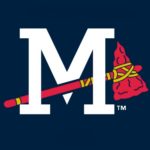 MISSISSIPPI BRAVES (CLASS AA)
MISSISSIPPI BRAVES (CLASS AA)
STARTER: Alex Jackson (Prospect Analysis)
Catchers with power will almost always find a way to make a living in major league baseball, which is why the Braves pulled Jackson out of the outfield, where he had been playing since being drafted by the Mariners in 2014, and put him behind the dish where he had played his high school career. Jackson exhibited all of the rust you would expect from someone who had not caught regularly in three years, but he improved enough through the course of the season to supply enough evidence that he could handle the position. In addition, he rediscovered his batting stroke, which had been hampered by shoulder problems and poor coaching. He’ll likely enter the 2018 season where he left, at AA Mississippi, but a good start to the season could see him in Gwinnett before too long, and perhaps given a cup of coffee in Atlanta late in 2018. He’s the top catching prospect in the system, and both major league catchers are free agents after 2018.
BACK-UP: Tyler Marlette
A 5th-round pick by the Mariners in 2011, Marlette was ranked as Seattle’s #8 prospect at one point in his minor league career. However despite flashing power and solid bat-to-ball skills, Marlette’s year-over-year inconsistency meant that he never made it higher than the AA level. After a .245/.309/.405, 11 home run season for the AA Arkansas Travelers in 2017, Marlette became a minor league free agent and signed with the Braves. To say the Braves have had some success recently in rehabilitating failing Mariners prospects is a bit of an understatement (Jackson, left-handers Luiz Gohara and Tyler Pike), and they will see if they can bring out the best in Marlette’s bat and help him improve his defensive game. Now entering his age 25 season, Marlette received an invitation to big league spring training, so he’ll have plenty of opportunity to make an impression on his new organization.
BACK-UP: Jonathan Morales (Prospect Analysis)
It’s been a wild ride for Morales since he was drafted in the 25th round in 2015. A third baseman in college, the Braves converted him to catcher, and he ended up taking to the position like a duck to water. On the flipside, the potent bat he demonstrated in the rookie leagues hasn’t materialized as anyone hoped, and 2017 was a nightmare year at the plate, especially after being jumped to the AA level prematurely. Morales will fight for playing time either back in Mississippi or in high-A Florida, and perhaps play at first, third, and even second base to possibly open up new paths of advancement.
Organizational catchers Tanner Murphy and/or Sal Giardina and his exceptional mustache could fill in at this level. Or at AAA. Or in high-A Florida. Really wherever a catcher is needed due to injury.
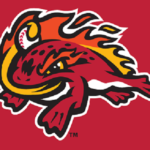
FLORIDA FIRE FROGS (CLASS A+)
STARTER (Promotion): Lucas Herbert (Prospect Analysis)
A second-round pick in the 2015 draft out of high school, Herbert is a glove-first catcher that demonstrated some offensive potential in Rome last season. Herbert just turned the odometer over to 21 years and it’s likely that Herbert will have a deliberate advancement up the organizational ladder. The Braves should show patience with him because the defense has the potential to be special.
BACK-UP (Promotion): Drew Lugbaeur (Prospect Analysis)
The man already affectionately called “Slugbauer” in some corners of fandom will likely take his home-run-hitting show to Kissimmee. He’s already been listed as a back-up at first base and third base in this series, but the Braves insist that he’ll remain primarily a catcher, and reports on his defense were positive coming out of the instructional leagues this fall.
BACK-UP (Promotion): Carlos Martinez
Martinez quietly had a solid offensive season by putting the ball in play, but he won’t be mistaken for a real offensive threat. He’s a capable receiver though and has served as a lower-level organizational catcher the last five seasons.
ALSO: Brett Cumberland (Prospect Analysis)
Cumberland represents the biggest mystery in the Braves minor leagues right now. Cumberland broke out for Rome last May and advanced to Florida where he continued to show good on-base skills. He went to the Australian Baseball League to get more at-bats and performed well, but mostly played right field. By all accounts he performed well at the position, and my observations show him as athletic enough to make the outfield a path for advancement for him. That said, he showed steady defensive progress over the course of the year, and he’s probably at least as good behind the plate as other bat-first catchers like Jackson, Marlette, and Lugbaeur. In any case, I’m listing him here because I’m not quite convinced the Braves are going to move him to the outfield, at least not full time quite yet. He could start the season at AA Mississippi, but I think he’ll start back in high-A and have to hit his way to AA.

ROME BRAVES (CLASS A)
STARTER (Promotion): William Contreras (Prospect Analysis)
It’s not often that a 20-year-old catcher just finishing his third year in the rookie leagues gets a lot of prospect buzz, but that’s just what’s happening with Contreras. Part of that may have to do with his older brother, Willson Contreras, developing into one of the best all-round catchers in the major leagues for the Cubs. Most of it though are the scouting reports from Danville about Contreras’s all-round game. In fact, Contreras may be the most balanced catching prospect on this list, as both his bat and his mitt get equal praise. Contreras received a surprise invitation to big league camp, and while the Braves often like having their young prospects get a full season at Rome to learn the ins-and-outs of full-season ball, if Contreras gets off to a hot start don’t be surprised to see him get a quick promotion.
BACK-UP (Promotion): Hagen Owenby
Owenby was drafted on round behind Lugbauer in the 2017 draft, and for a few weeks it was a coin flip as to which player was the better hitter. For now that answer is Lugbauer, but Owenby also can sting the ball. Behind the plate his actions are stiff and his footwork is suspect, but there’s a foundation to build from. Look for Owenby and Contreras to split most of the catching and designated hitter duties.
BACK-UP (Promotion): Alan Crowley
Crowley is a glove-first organizational-type catcher who does a good job behind the plate and can occassionally crush mistake pitches. He’s also got a very strong arm. He got a brief taste of Rome late last season and looks to return there, mostly to spell Contreras and Owenby on occassion.
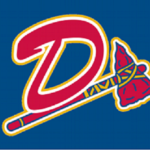 DANVILLE BRAVES (Rookie League)
DANVILLE BRAVES (Rookie League)
STARTER (Promotion): Ricardo Rodriguez
Rodriguez was part of the return the Braves received from the Padres for Christian Bethancourt, a rare trade of a player who at the time was still in the complex leagues. Two seasons later, Rodriguez is still in the complex leagues. He’s good bat-to-ball skills, showed a little more power last season for the GCL Braves, and looks like he should be a pretty good hitter, but the results haven’t been there for him yet.
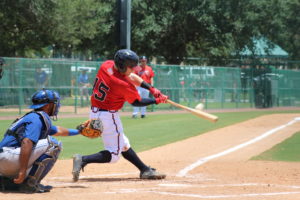
BACK-UP (Promotion): Zack Soria
Soria did what you’d hope from a 23-year-old college player in a league with mostly teenagers, he provided a steady hand behind the plate and hit fairly well, going .256/.389/.346. Somewhat undersized for the role, he’s not going to be a power source, but he should provide that same steady hand in Danville or even higher in the organization.
FINAL THOUGHTS: Say what you will about John Coppolella, but when he told fans two years ago that catching depth was a serious concern for the organization that needed to be addressed, he addressed it. Flowers and Suzuki have turned out to be terrific additions at the major league level, and then he added Jackson into the system. The Braves almost immediately sought to move him back to catcher, a move that could pay off in a big way. Then in the lower minors, there’s potential impact bats with Contreras, Cumberland, Lugbaeur, and even some intriguing upside in the likes of Marlette, Herbert, Morales, and Owenby. In just a couple of seasons, the organization has turned their biggest depth issue into a relative strength.
OFR TOP 5 CATCHER PROSPECT RANKINGS:
- Alex Jackson
- William Contreras
- Brett Cumberland
- Lucas Herbert
- Kade Scivicque


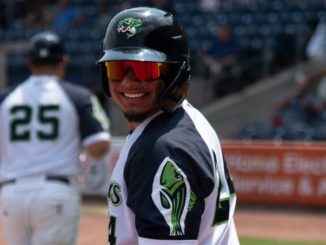
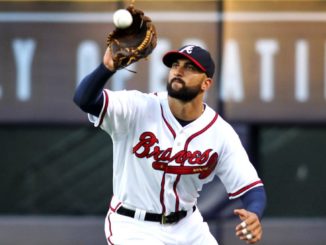
Leave a Reply